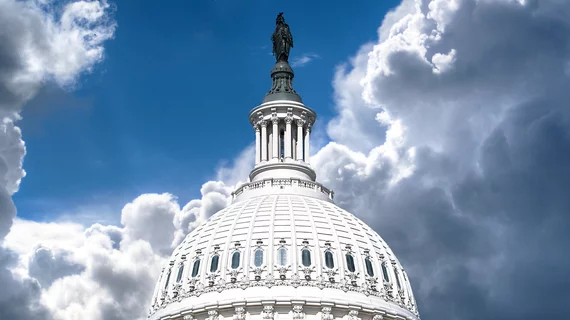The Biden administration released the final 2022 Medicare Physician Fee Schedule Tuesday, offering a mixed bag for radiologists and other physician specialists.
On the positive side, CMS is postponing the penalty phase for the Appropriate Use Criteria program by a year, to Jan. 1, 2023. First proposed in 2014, the oft-delayed effort requires physicians to consult a decision-support system before ordering advanced imaging to curb healthcare waste. But on the negative, the agency is advancing a clinical labor wage update members of the specialty say will result in reduced pay, particularly among interventional radiologists and radiation oncologists.
Docs and members of Congress have rallied to quash such changes, predicting practice closures if the Centers for Medicare & Medicaid Services failed to act.
“Despite objections from [the American College of Radiology] and others, CMS chose to move forward with implementation of clinical labor pricing updates,” the professional association said Tuesday night. “However, due to the actions of ACR and others, the updates will be phased in over a four-year period, and the payment impact to radiology and radiation oncology providers largely reduced by half.”
In an announcement, CMS said this is the first time in nearly 20 years that it’s updating clinical labor rates used to calculate practice expenses in the fee schedule. Under the changes, payments to primary care specialists who use clinical labor—family practice, geriatrics, internal medicine, etc.—will rise, driving “greater person-centered care for these services.” Due to balanced-budget requirements, rising spending in one place necessitates cuts elsewhere. Interventional radiologists and radiation oncologists—with high medical supply costs and lower spending on clinical labor—are slated to bear the brunt. However, CMS is now phasing-in such changes to “maintain payment stability and mitigate any potential negative effects on healthcare providers.”
ACR said Tuesday that it’s “disappointed” CMS is moving forward with clinical labor pricing updates starting in 2022 and running through 2025. But the agency is making a handful of modifications in response to lobbying from the college and its Clinical Labor Coalition. These changes will decrease the initial estimated impact to diagnostic radiology and nuclear medicine from -2% down to -1%, interventional radiology from -9% down to -5% and radiation oncology from -5 to -1%.
With a temporary pandemic-related 3.75% pay bump expiring, CMS said the conversion factor will fall from $34.89 down to $33.59. The Radiology Business Management Association said Tuesday that it’s “dismayed” with such pay cuts during the COVID crisis, while the American Society for Radiation Oncology believes they will “endanger patient access” to care. Physicians across specialties are lobbying Congress to intervene in the coming weeks, as lawmakers did in late 2020.
“Amid the ongoing pandemic, it’s critical now more than ever to protect patients by stopping these cuts and working toward a long-term solution to stabilize the healthcare system,” John Ratliff, MD, chair of the Congress of Neurological Surgeons Washington Committee, said Nov. 2. “Patients have already delayed important preventative care like cancer screenings due to COVID-19. These cuts will further delay care to our nation’s seniors.”
For more on the 2022 MPFS, you can read this CMS fact sheet, the entire 2,414-page document, and the American College of Radiology’s nine-page summary.

